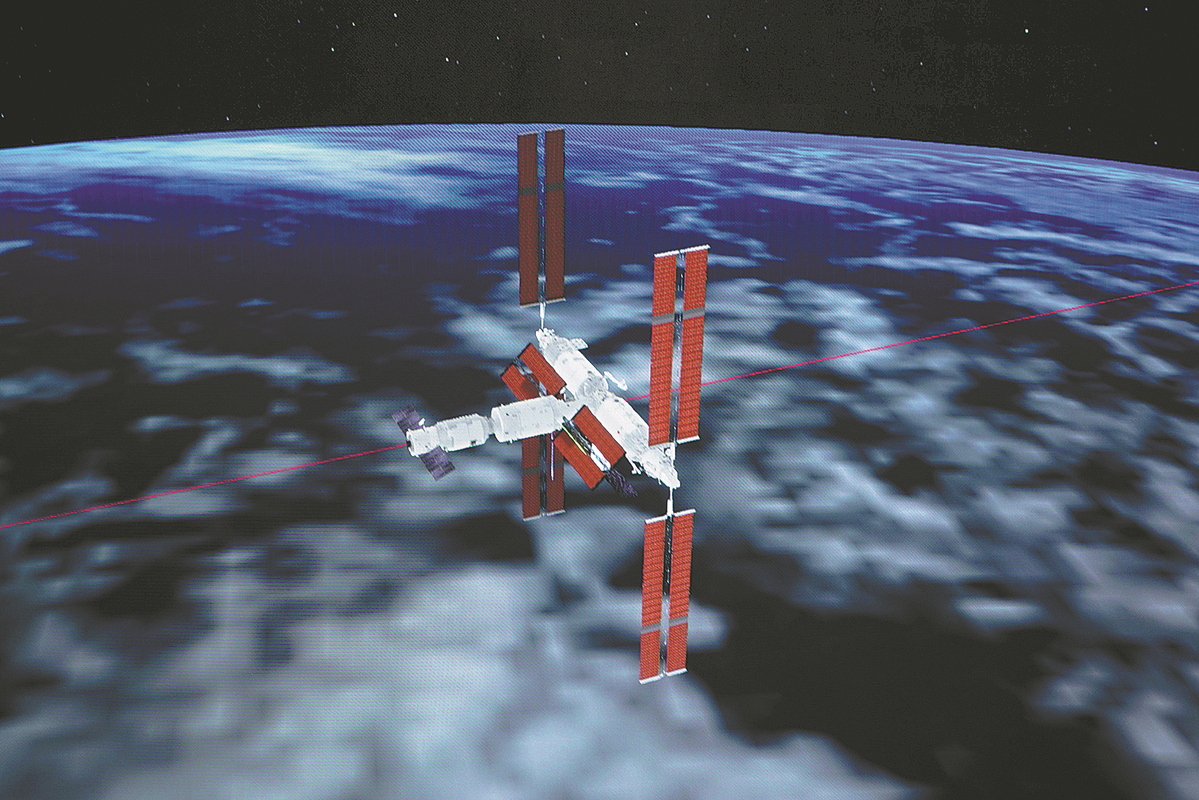
This simulated image captured at Beijing Aerospace Control Center on Nov 12, 2022 shows China's cargo spacecraft Tianzhou 5 having conducted a fast automated rendezvous and docking with the combination of the space station Tiangong. (Photo: Xinhua)
China has carried out an in-orbit test of its domestically developed space-based fuel cell, according to the China Academy of Space Technology.
The academy, part of China Aerospace Science and Technology Corp, said the cell worked well in environments characterized by vacuums, extreme low temperature and microgravity during the test that took place recently outside the Tianzhou 5 cargo spaceship.
The test generated important data that will be used to support the research and development of the next-generation spacecraft fuel cell system, it said.
The fuel cell is essential to the country's future manned explorations on the moon as it can provide stable power supply to landers and rovers, designers explained.
Tianzhou 5 was placed into low-Earth orbit by a Long March 7 carrier rocket that blasted off on Nov 12 at the Wenchang Space Launch Center in Hainan province. It docked with the Tiangong space station the same day.
Designers of Tianzhou 5 at the China Academy of Space Technology said the cargo ship carried about 5.3 metric tons of materials, including life and mission necessities, scientific equipment and a mini experimental satellite. The craft contained nearly 1.4 tons of propellant for the Tiangong station, the designers said.
Tianzhou 5 has become the fourth cargo ship to have docked with Tiangong, following Tianzhou 2, 3 and 4.


